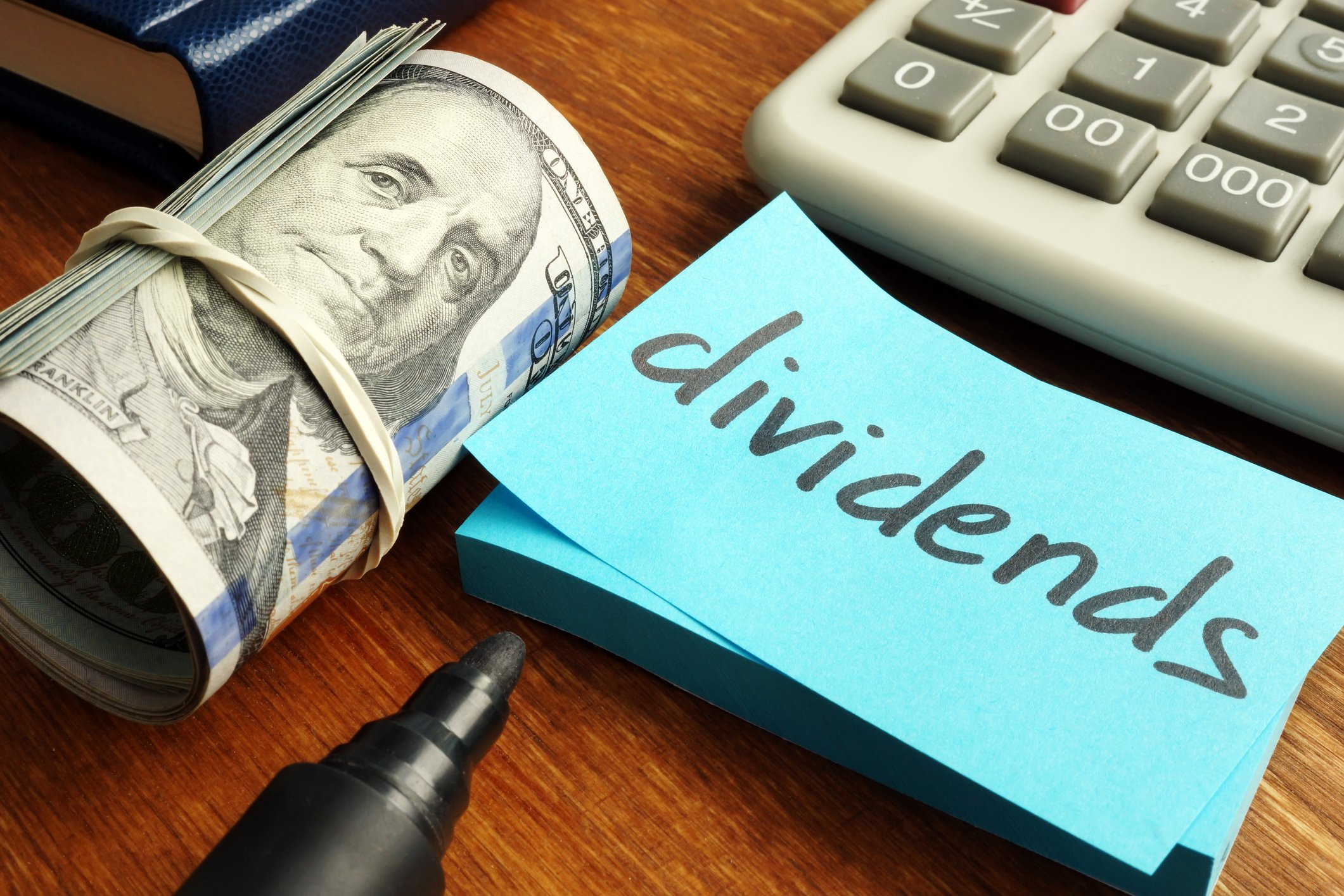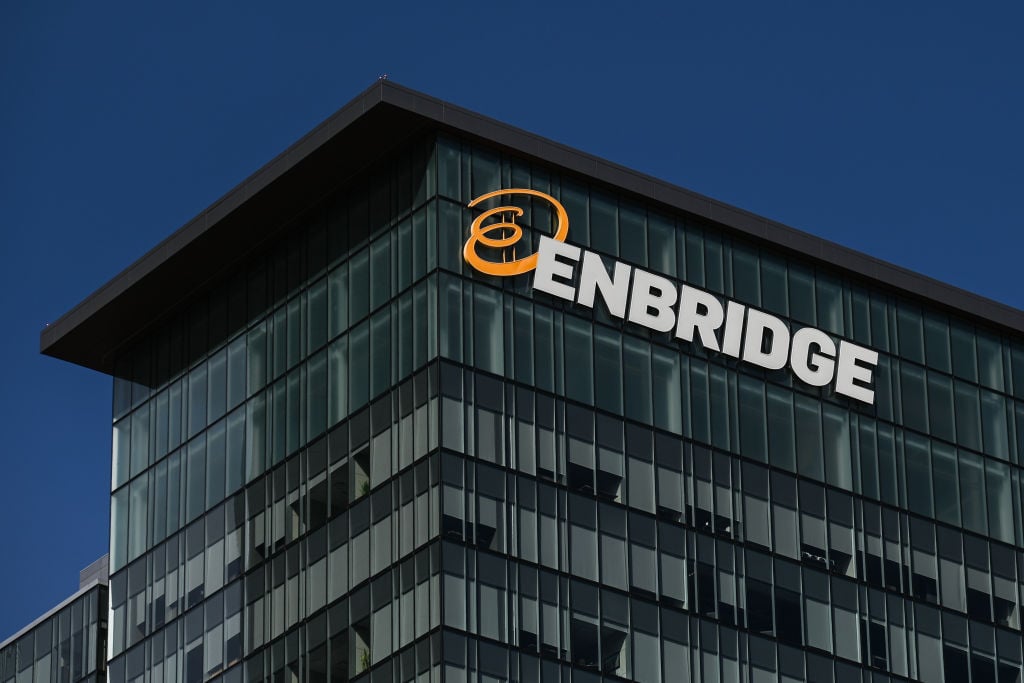Enbridge (ENB +0.14%) recently put the wraps on 2019 by reporting its fourth-quarter and full-year results. The Canadian energy infrastructure giant posted solid numbers in both periods, including achieving the top end of its distributable cash flow guidance range. Because of that performance and the company's strategic progress throughout the year, Enbridge's 5.8%-yielding payout is on an excellent foundation.
Drilling down into Enbridge's results
|
Metric |
2019 |
2018 |
Year-Over-Year Change |
|---|---|---|---|
|
Adjusted EBITDA |
$13.271 billion |
$12.849 billion |
3.3% |
|
Distributable cash flow (DCF) |
$9.224 billion |
$7.618 billion |
21.1% |
|
DCF per share |
$4.57 |
$4.42 |
3.4% |
Data source: Enbridge. All figures in Canadian dollars. $1=CA$0.75.
Last year was the final one in the company's most recent three-year plan following its merger with Spectra Energy in 2017. During that time, the company completed a large slate of expansion projects while strengthening its balance sheet with asset sales and simplifying its corporate structure by acquiring all its publicly traded affiliates. While those two strategic initiatives acted as headwinds on EBITDA and DCF per share growth last year, Enbridge more than offset those issues thanks to the uplift from recently completed expansion projects.
Enbridge placed $9 billion Canadian worth (or US$6.8 billion) of new assets into service last year, CA$7 billion ($5.3 billion) of which started up during the fourth quarter. Those projects include the Gray Oak oil pipeline in the U.S., the Hohe See offshore wind project in Germany, and the Canadian segment of its major Line 3 Replacement. The new additions enabled the company to deliver DCF per share toward the top end of its CA$4.30 to CA$4.60 ($3.25-$3.47) guidance range. As a result, Enbridge generated enough cash to cover its high-yielding dividend by a comfortable 1.54 times, implying a 65% payout ratio, which is a healthy level for a pipeline company. Because of that, the company plans to increase its dividend by 9.8% for 2020, which marks its 25th consecutive year of boosting its payout.
Meanwhile, Enbridge completed its asset sale program in December by closing the second phase of its CA$4.3 billion ($3.3 billion) Western Canadian midstream divestiture. Overall, the company brought in CA$8 billion ($6 billion) of cash from these sales, which helped strengthen its balance sheet and fund expansion projects. Thanks to the combination of expansion-fueled earnings growth and debt reduction from the asset sales, Enbridge ended the year with a leverage ratio at its targeted level of 4.5 times debt-to-EBITDA.

Image source: Getty Images.
A look at what's ahead for Enbridge
Enbridge launched its next three-year plan, which will guide it through 2022. The company sees its DCF rising to a range of CA$4.50 to CA$4.80 per share ($3.40-$3.62) this year -- a 2% increase at the midpoint -- as the continued headwinds from asset sales battle against the growth coming from its expansion projects. Longer-term, however, the company anticipates that its DCF per share will grow by 5% to 7% per year, which it expects to be entirely self-funded with retained cash after paying its dividend and new debt while maintaining leverage at or below its current level.
The company has CA$11 billion ($8.3 billion) expansion projects under construction to support its three-year growth plan. Leading the way is the $3 billion U.S. phase of its line three expansion project. It continues to make progress gaining the permits needed to finish that project, including recently receiving the approval of Minnesota's Public Utilities Commission for its environmental impact statement. In addition to that project, Enbridge has several oil and gas pipelines under construction, as well as an offshore wind project in France.
Meanwhile, it has many more expansions in development. It recently agreed to team up with Enterprise Products Partners (EPD 0.66%) to build an offshore oil export terminal in Texas. Furthermore, Enterprise and Enbridge are working to potentially expand their jointly owned Seaway pipeline. In addition, it has agreed to buy full control of the Rio Bravo Pipeline project from LNG developer NextDecade (NEXT 1.47%). Initially, NextDecade was going to be a 50-50 partner with Enbridge on the project, which would support its Rio Grande LNG export facility in Texas. However, it will now assume full control over the pipeline development. These and other projects help support Enbridge's view that it can grow its DCF by 5% to 7% annually over the next several years, which should drive similar annual increases in its dividend.
Plenty of fuel to keep growing this high-yielding dividend
Enbridge's successful completion of its three-year plan put its dividend on an increasingly sustainable footing. That's because the company has strengthened its balance sheet so that it can keep funding its growing backlog of high-return expansion projects. As a result, it seems highly probable that Enbridge will continue its streak of boosting its high-yield payout each year for the foreseeable future, which makes it an ideal stock for income-seeking investors.








